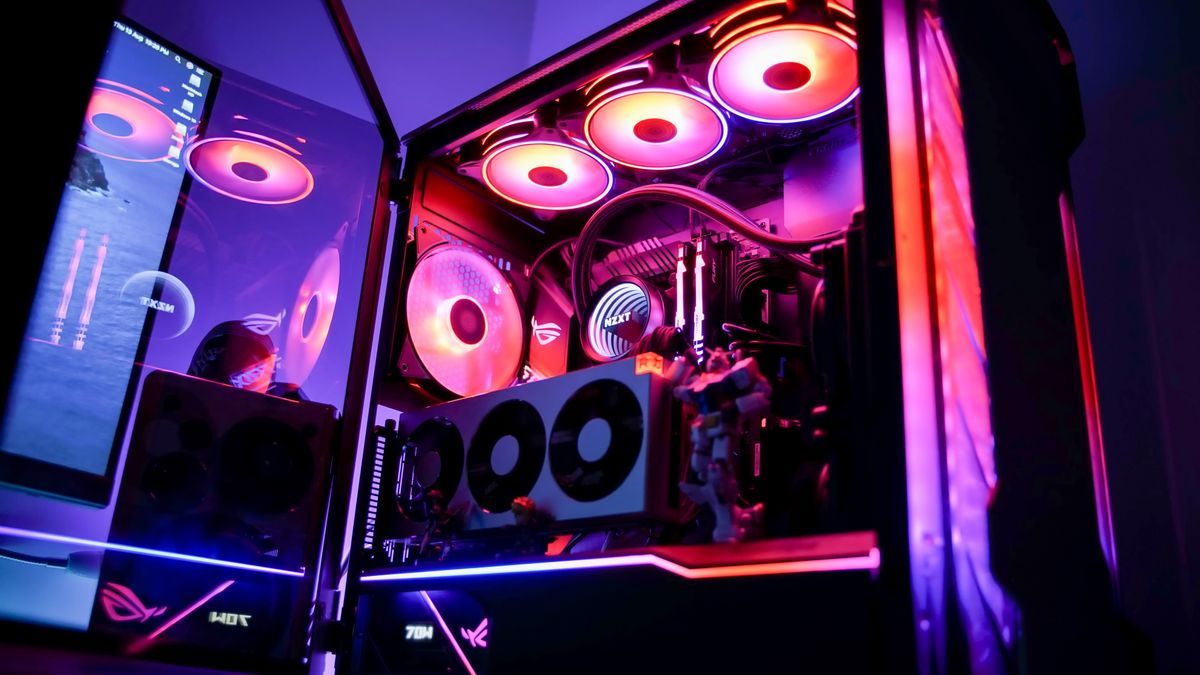As data is becoming the foundation of our economy, we must find ways to diversify the use of computing resources that harness its potential and reduce our dependence on just a handful of models and manufacturers. This will be one of the best ways to support the AI revolution as competition for GPUs increases and will ensure that we maintain innovation rather than relying on a few players controlling the market. We're already seeing novel approaches that will allow your gaming PC to power new AI models.
Market concentration in the chip industry has led to a shortage of most GPUs that train these models, raising concerns among both CTOs and government policy makers. And while Big Tech has the resources and influence to secure what's available, smaller companies often delay projects as they struggle to push their models forward. That's because GPUs are difficult to source if companies don't buy large quantities, and they're expensive: It costs upwards of $600,000 to $1 million to train even the most basic large language models (LLMs), an insurmountable price tag for many. . Moving towards a more diversified landscape of chip usage is not simply a pragmatic response to current challenges; It is a proactive stance to future-proof our technological evolution and ensure the lasting vitality of the AI ecosystem.
Founder of Akash Network and CEO of Overclock Labs.
Wrong solution
The popular solution to the supply crisis appears to be to ramp up production of ultra-advanced chips – particularly the powerful A100 and H100 – and have other tech giants make similar components. While this is good news for the largest AI companies, it does little to reduce market concentration and lower prices. And, more importantly, it fails to make AI acceleration hardware more accessible to smaller gamers. Mass orders for top-of-the-line GPUs reduce availability for other organizations looking to gain a foothold in AI training. It also allows big tech companies to maintain pricing power and weakens incentives that could otherwise drive crucial innovations in the space. And with increasingly powerful GPUs being built, an attitude is emerging where a company's ability to get the biggest, best, and newest models becomes a competitive advantage.
That thinking is flawed – or at least not sufficiently explored – as existing technologies and novel techniques offer a way to diversify chip usage and allow startups to secure computing. In the next three to five years we will see AI companies start working with a wider range of GPUs (from the most advanced to the least powerful) that will free up the market and unleash a new wave of innovation. This strategic shift promises to free the market from the clutches of high-end exclusivity, heralding a more inclusive, dynamic and resilient AI ecosystem, primed for sustained growth and creativity.
maturation space
The maturation of the AI space will drive much of this change, as we will see more language models tailored to specific niches, rather than one-size-fits-all LLMs like ChatGPT and Claude. This diversification not only addresses the unique demands of diverse industries and applications, but also marks a move away from the homogeneity that has characterized the AI landscape until now. And developers will increasingly tune their models with less powerful chips, motivating them to seek access to consumer GPUs that offer efficiency and affordability. This shift away from reliance on high-end components democratizes access to computing resources and spurs innovation by challenging the widespread industry assumption that only the most advanced chips can facilitate revolutionary advances in AI.
To some extent, this is already happening, as developers use efficient techniques such as low-rank adaptation (LoRA) that reduce the number of training variables in language models. They are also parallelizing workloads, where they deploy clusters of, say, 100,000 smaller chips to do the work of 10,000 H100s. These solutions could spark a wave of innovation away from the chip market's “bigger is better” arms race, marked by a focus on efficiency, collaboration and inventive problem-solving.
Meanwhile, existing technologies, including Kubernetes and open source cloud infrastructure, will provide access to these less powerful chips. People and organizations that own GPUs will be able to sell or rent their capacity on these networks, as we are already starting to see with some projects. The intersection of technology and community-driven initiatives presents an opportunity to break down barriers, both economic and technological, fostering an environment where computational power is not limited to a select few but is widely distributed across a wide range of contributors.
Second wave
In the not-too-distant future, this market has the potential to expand further as consumer GPU owners make idle capacity available to AI companies, especially with the big players supercharging consumer GPUs at almost a third of the cost of high-end models that allow AI to run on everyday PCs or laptops. Using GPUs for gaming has the potential to accelerate innovation cycles as they are updated on an annual cadence; This would allow AI training to utilize new architectural advances more quickly than with specialized enterprise hardware, which evolves more slowly.
Since many everyday items have GPUs, this opens up a world of opportunities for people to monetize unused computing. Think about blockchain miners pointing their GPUs at cloud markets when their projects go proof-of-stake, or students doing the same with gaming PCs when they're not gaming. Additionally, smaller, more efficient AI models can be run on personal devices. We're already seeing that Gemini Nano can run offline on Google's Pixel 8 devices; This makes AI models hosted locally on mobile devices a real thing.
These developments could provide new revenue streams for vendors and additional GPU supply for startups. To be sure, none of this replaces the need for high-quality GPUs. But it will reduce market concentration, making companies less dependent on a single company – or country – producing the chips they need. We will have a mature and complex market where GPUs of different speeds and quality will play critical roles in a variety of AI projects. This will usher in a second wave of AI innovation that will benefit everyone. As the AI landscape evolves, the fusion of consumer GPUs with AI capabilities will unleash unprecedented opportunities for innovation and collaboration across industries, and will have profound economic impacts by distributing capability across a broader segment of society. .
We've featured the best AI writers.
This article was produced as part of TechRadarPro's Expert Insights channel, where we feature the best and brightest minds in today's tech industry. The views expressed here are those of the author and are not necessarily those of TechRadarPro or Future plc. If you are interested in contributing, find out more here:









